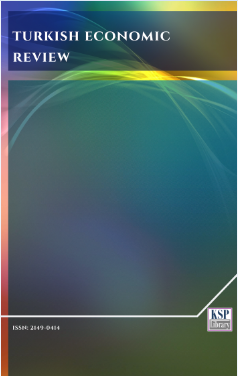Corruption and health care provision: An extension of the Shleifer and Vishny’ Model
Abstract
Abstract. The problem that arises is how the State official in a monopoly situation maximizes the value of bribes collected, by selling public services to users? To answer this question, we show first that in the case of health care provision, the Shleifer and Vishny’ simple monopoly model which highlights two forms of corruption (with theft and without theft) is limited insofar as it underestimates not only the value of bribes likely to be collected, but also the loss of income that corrupt practices cause to public services. Our model rather reveals that the State agent in a monopoly situation can discriminate users according to their characteristics in order to collect more possible bribes. Indeed, our model shows that when a medical doctor maximizes its earnings and whatever the form of corruption practiced, he plays not only on amounts of bribes paid and a part of the official price, but also on users’ characteristics. However, for some amounts the State agent will tend to practice the form of corruption without theft on certain users’ characteristics where he/she would draw the greatest possible gain.
Keywords. Corruption with and without theft, Discrimination at first degree, Lerner`s index, Profit-sharing scheme, Health system.
JEL. D40, I10, I14, I15.Keywords
References
Acemoglu, D., & Verdier, T. (2000). The choice between market failures and corruption,” American Economic Review, 90(1), 194-211. doi. 10.1257/aer.90.1.194
Alesina, A. (1999). Too small and too large governments. In V. Tanzi, K. Chu, & S. Gupta (eds.), Equity and Economic Policy, IMF: Washington, DC.
Becker, G.S., & Stigler, G.J. (1974). Law enforcement, malfeasance, and the compensation of enforcers, Journal of legal Studies, 3(1), 1-18. doi. 10.1086/467507
Bearse, P., Glomn, G., & Janeba, E. (2000). Why poor countries rely mostly on redistribution in- kind, Journal of Public Economics, 75(3), 463-481. doi. 10.1016/S0047-2727(99)00076-6
Ehrlich, I., & Lui, F.T. (1999). Bureaucratic corruption and endogenous growth, Journal of Political Economy, 107(S6), S270-S293. doi. 10.1086/250111
De Soto, & Hernando (1989). The Other Path, New York Harper, and Rose.
Grignon, M., Paris, V., & Polton, D. (2002). L’influence des modes de rémunération des médecins sur l’efficience du système de soins. Commission sur l’avenir des soins de santé au Canada, étude No.35. [Retrieved from].
Gupta, S., Davoodi, H., & Alonso-Terme, R. (1998). Does corruption affect income inequality and poverty?, IMF Working Paper, No.98/76. [Retrieved from].
Gupta, S., Verhoeven, M., Tiongson, E. (1999). Does higher government spending buy better results in education and heathcare?, IMF Working Paper, No.99/21. [Retrieved from].
Phelps, C.E. (1995). Les Fondements de L’économie de la Santé, Nouveaux horizons.
Rose-Ackerman, S. (1998). Une sratégie de réforme anti-corruption, Mondes en Développement. 41-54. [Retrieved from].
Shleifer, A., & Vishny, R. (1993). Corruption, Quarterly Journal of Economics, 108(3), 599-617. doi. 10.2307/2118402
Tiongson, E., Davoodi, H., & Gupta, S. (1998). Corruption and the provision of health care and education services, IMF Working Paper, No.00/116. [Retrieved from].
DOI: http://dx.doi.org/10.1453/ter.v5i2.1663
Refbacks
- There are currently no refbacks.
.......................................................................................................................................................................................................................................................................................................................................
Turkish Economic Review - Turk. Econ. Rev. - TER - www.kspjournals.org
ISSN: 2149-0414
Editor: [email protected] Secretarial: [email protected] Istanbul - Turkey.
Copyright © KSP Library




